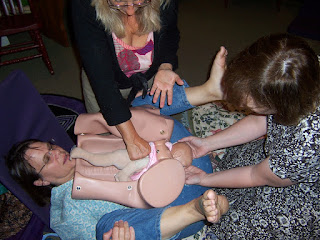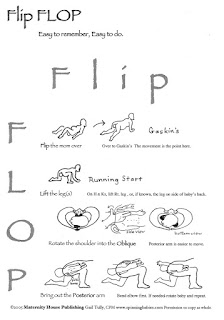A doula friend of mine, “J,” asks how real is the Doctor’s concern that a mother with an estimated projected fetal weight of 11 pounds by the time of the due date will have a shoulder dystocia.
“They had her see the OB and heard the reasons for perhaps choosing a repeat surgical birth. She was told that if gestational diabetes is back that they see these big babies with a weight distribution in the upper body (shoulders) that could be problematic during birth. …
This mama is hoping for a vaginal birth but she is philosophical about the whole thing. She knows there are no assurances but feels she needs more info right now. She is wondering about continuing the Spinning Babies® stuff she has been doing. Her abdomen is pendulous and she has been using a rebozo (cloth to wrap her belly) to get some relief for the back discomfort she is having…
Thanks for being out there doing what you do.
Gratefully,
Gail Tully responds
Dear J,
Hi. I can only share what I would have recommended as a midwife. As a doula I would not have made the following statements about my opinion of risk or stated recommendations in the way I’m about to share.
Wearing a pregnancy belt and getting body balancing bodywork, while eating smart are three things she can do now. There’s also a birth tip at the end of this reply.
The pendulous uterus is a risk for shoulder dystocia as is baby’s size. Ultrasounds can be off, of course. It’s fair to note that her chance of no shoulder dystocia is somewhere around 4 out of 5 with three factors, size, pendulous uterus and a previous shoulder dystocia. Doctors and midwives may feel that a 1 in 5 chance of shoulder dystocia is worth a cesarean. Early induction isn’t very preventative of shoulder dystocia or a cesarean. However, when doctors and midwives do practice drills and bring out the posterior arm in a case of shoulder dystocia they will reduce the chance of injury.
What will improve a birthing woman’s chance of having no shoulder dystocia?
- Wearing the pregnancy belt all the way through the birth of the shoulders!
- Body Balance and especially of the round ligaments (Webster Maneuver by a trained Chiropractor)
- Food selection for healthy metabolic function! (Cut the sugar and breads, etc.)
- Supple sacrum with body work and self care techniques (some beyond our recommendations)
- Avoiding a vacuum or forceps by the above tips
- Upright birth position and not pulling the legs up to push.
- In second stage and even After the head is born, and in any maternal position, a posterior pelvic tilt done with a contraction in 2nd stage or even without a contraction but with a push after the head is born.
She may have another shoulder dystocia. She may not. I don’t dismiss the potential but I don’t dismiss vaginal birth because of this risk. If she does have a SD, I suggest she flatten her lower back while her doctor rotate the shoulders free or brings out the posterior arm. The chance of injury to the baby is about 7 in 100 and reduces to less than 2% when providers do practice drills (Crofts 2014; also see Wagner, 2021; Kaijomaa, 2022). Permanent injury is also low risk. Death is less but not zero.
What does she want and what is the next action to take to get that?
[Improve body function with movement, specifically addressing imbalances in tensions in the body structure, and not burdening the metabolism with processed sugars and an overabundance of carbs.]
Thank you for your continuing care of our mothers, Doula!
Much love,
Gail



